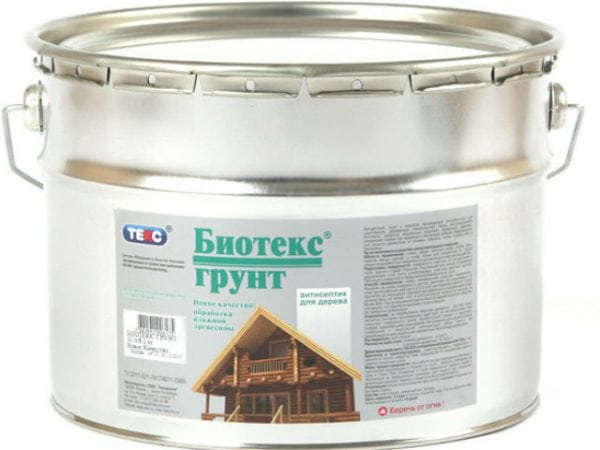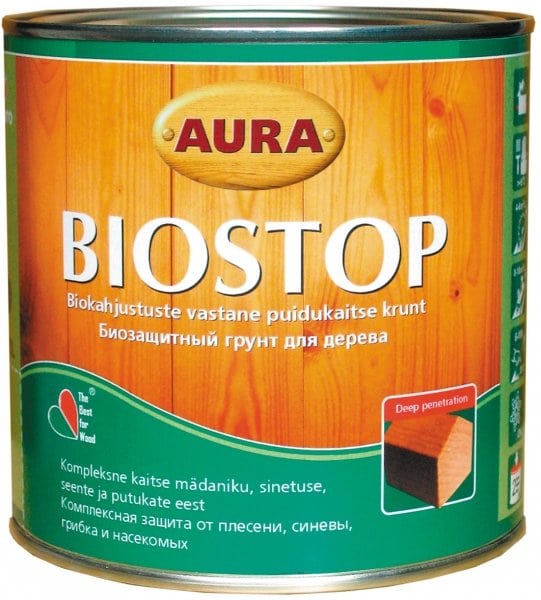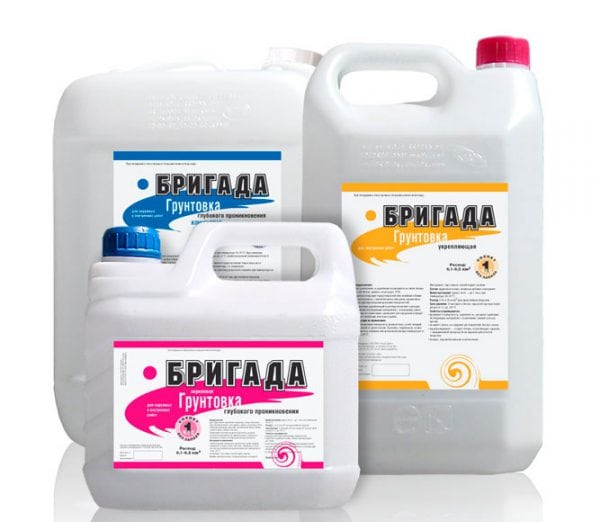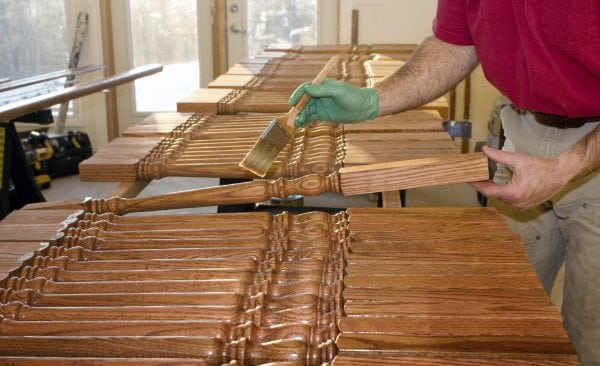The fashion for wooden buildings never passes. The wood is strong enough, easy to handle, environmentally friendly, in the buildings from it there is always a healthy microclimate and normal humidity. Houses are built from wood, gazebos, furniture is made, but this material has some disadvantages: it is susceptible to decay, infection by fungus, bacteria. To protect wooden products, a deep penetration antifungal primer is required.
- What are the materials
- Choose the right one
- For wet rooms
- For dry rooms
- For outdoor priming
- Selection tips
- Processing Rules
- If the wood is affected by fungus or mold
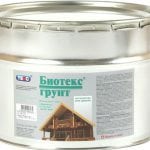
Such a primer will not only protect, it will help strengthen porous and weak surfaces, especially in places where the wood comes into contact with other materials (brick, concrete). It is in such places that wood is most susceptible to infection, decay, and mold development.
Properly selected primer antiseptics will help to avoid many troubles. They form a thin protective film on the surface of the tree, do not allow mold spores, fungi, bacteria to penetrate, some have the effect of repelling insects.
to contents ↑What are the materials
To protect against harmful insects and microorganisms, depending on the basis, the following types of antiseptics are distinguished:
- Water dispersible. They are used for processing wood products that are not in direct contact with moisture. They do not have a pronounced smell, are non-toxic, more often than other compositions they are used for processing walls indoors.
- Mixtures based on chemical or organic solvents have high protective properties. They form a dense protective film, are very moisture resistant, suitable for surface treatment on the street and indoors. Not recommended for residential walls.
- Oil. The primer is diluted with drying oil and, after drying the impregnation, the product is coated with oil paint, providing reliable protection and effectiveness of the composition.
- Combined. They have high bioprotection, as a rule, have flame retardant properties (fireproof).
Choose the right one
You should not buy the advertised universal antiseptic primer for all types of work. As practice shows, such compounds do not always provide the tree with reliable protection against mold.
to contents ↑It is better to first determine the purpose of the product, what effects it will be exposed to (humidity, temperature changes), surface type (loose or dense), the contact of wood with other materials (brick, metal, concrete), and then it will be possible to choose the right composition.
For wet rooms
In the bathroom, kitchen or bathhouse, where it is always hot and humid, the risk of developing mold, mildew on the walls increases. For these rooms, it is necessary to use a mixture with good water resistance, antifungal properties.After its application on the surfaces of walls, floors, ceilings, a thin water-repellent layer should form.
In such rooms it is necessary to prime in 3 layers. For this purpose, it is best to use an acrylic water-dispersion primer. It deeply penetrates the structure of the material, provides antibacterial protection, and prevents the development of rot. This primer has great versatility, you can process it all surfaces: from wood, concrete, brick, metal.
to contents ↑For dry rooms
For walls of a room that does not have high humidity, such careful processing is not necessary. If the walls are clean, without fungi or mold, then it is enough, depending on the surface, to apply 1-2 layers of antiseptic. It is advisable to choose on a water-dispersion basis - such options have less toxicity.
For outdoor priming
Mixtures with great water-repellent and protective properties are suitable, because wooden parts are exposed to the negative effects of atmospheric phenomena, temperature extremes. In this case, antiseptics are suitable not only for water dispersion, but also on any other basis, having a liquid consistency, and having an antifungal effect.
to contents ↑It is better to use not a specific tool for wood, but a universal one - this will allow at the same time to process other surfaces of concrete or brick.
Selection tips
When buying, consider the following:
- how long the composition is able to effectively perform protective functions;
- consumption during wood processing (the most economical are water-dispersion-based preparations);
- where it can be used (external or internal works), versatility;
- toxicity (how chemicals affect the body);
- combination with a decorative coating that will be applied to the wall after.
Processing Rules
Finishing work is necessary, wearing gloves and a respirator, because most of these compounds are very toxic. Only water-dispersion solutions have low toxicity. To maintain the beneficial qualities of the mixture, the following should be considered:
- Do not treat wet or frozen wood. Since the primer is not sufficiently absorbed, the beneficial properties of the antiseptic will not fully act. This is especially true for aqueous dispersion solutions, because they are more liquid.
- Apply to a dry, clean surface.
- Temperature is very important. Using solvent-based products at temperatures below + 5 ° C, and water dispersion below + 10 ° C, it is possible to violate the chemical properties of the impregnation, reduce the penetration depth, and reduce the protective effect.
- Start work with the primer of damaged areas, cuts, ends of the boards.
- Particular attention should be paid to places where the wood is in contact with metal or concrete - the development of mold is most likely there.
to contents ↑Such processing can only be carried out as a prophylaxis if the material is clean.
If the wood is affected by fungus or mold
If such a nuisance happened, universal remedies are already useless. It is necessary to individually select a drug for "treatment", given the type and degree of damage to the walls.
Wood may be in degree of damage:
- Slightly affected. Mold is just beginning to develop space. In such cases, conventional antiseptic impregnations can sometimes be effective, especially on a water-dispersion basis.
- Heavily infected. Here, if it is not possible to replace the damaged section of the wall, floor, ceiling, it should be cleaned, and then use antifungal agents or with anti-mildew effect.
When dealing with wood, do not neglect such a necessary thing as a primer with antibacterial properties.
Correctly selected in accordance with the operating conditions and the nature of the surface (board, unbarked log, timber), the drug is able to penetrate deep into the material, increasing its resistance to adverse environmental conditions, temperature extremes, fungi and rot, to substantially level the walls, and ensure the subsequent good adhesion of the decorative coating with a foundation, providing quality repairs.

